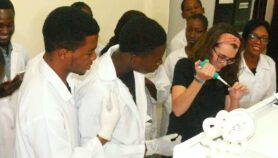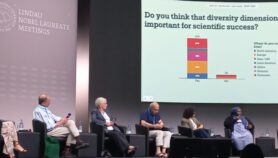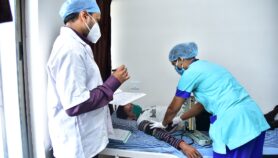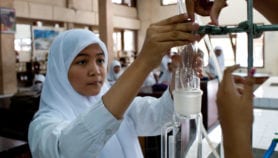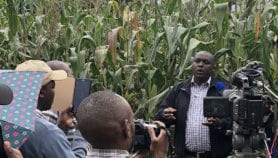By: Li Daguang
Send to a friend
The details you provide on this page will not be used to send unsolicited email, and will not be sold to a 3rd party. See privacy policy.
Low levels of science literacy must be tackled by improving China’s science media and encouraging scientists to get involved, says Li Daguang.
For more than 20 years, the China Association for Science and Technology (CAST) has been conducting national surveys of public scientific literacy and using the data to compare China with other countries.
An international meeting on scientific literacy held by CAST’s Chinese Research Institute for Science Popularization (CRISP) last month (14–15 September) provided a forum for researchers and government officials to discuss the results and their implications for improving scientific capacity in the country.
The discussion focused on the low percentage of scientific literacy in Chinese adults, according to the most recent national survey conducted by CRISP released a few months ago.
But measuring and improving scientific literacy isn’t the only science communication issue which China needs to tackle. The public’s understanding of controversial scientific issues and boosting the role of Chinese scientists in communication are among the major challenges.
Low literacy
Only three per cent of Chinese adults surveyed by CRISP meet the level of scientific literacy needed to understand scientific terms, concepts and methods, and the impact of science on society.
Populations around the world have been surveyed using the same questionnaire and China ranks low in comparison with other countries — a fact that Chinese researchers and government officials are reluctant to reveal. In the United States, results from a 2008 survey suggest that 28 per cent of adults met the same standard of literacy.
The Project for the Advancement of Scientific Literacy of Chinese Adults, a scheme established by CAST and the State Council, aims to raise, by 2020, scientific literacy to a level comparable to that of European countries in the 1990s. [1] But the latest survey results show that scientific literacy is growing at a worryingly low pace — up from two to three per cent in the decade since 2001.
And it’s not simply a matter of literacy. The Chinese scientific community must help to improve the public understanding of sensitive or controversial science and technology (S&T) issues, from nanotechnology to nuclear power to genetic modification.
And there are also questions about the free flow of information. Is all information about engineering projects, natural disasters and other issues relating to science and the environment open and freely available? Do local citizens have access to it, and do they feel free to feed back their opinions?
A role for television
The survey suggests that television is the main source of information about S&T for more than 90 per cent of the population. But my research on television science services across China indicated that the number of local stations with science channels decreased from more than 20 in 2002 to less than ten in 2010.
It also revealed that all genuine science services were cancelled when ratings became the single measure of quality for television programmes. Science programmes were replaced with features on ‘masters of health’ who talked about how to live longer by relying on a diet of only green beans or eggplants.
There was also no scientific information about the Fukushima nuclear accident in Japan, despite it being communicated effectively by Japanese media to their citizens. As a result, rumors that iodine could protect people from being affected by radiation led to a shortage of salt containing iodine.
Science television in China needs to change. The National Natural Science Foundation of China should fund professional television science companies to produce science programmes and distribute them to local stations across the country.
Someone else’s responsibility?
In a separate survey conducted in 2008, I assessed the attitudes of Chinese scientists towards science communication, questioning them about their participation in activities that popularise their research and their role in science communication. It showed that 80 per cent of scientists that belong to the Chinese Academy of Sciences are reluctant to participate in science communication activities.
They do not see science communication as their responsibility, and say they are only accountable to the organisations that fund them. The media and CAST should have the role of communicating science to the masses, they believe.
This disconnect between the Chinese science community and the media remains unchanged. Training for scientists to communicate with the media and explain their work without jargon has not yet been established in China.
An annual science fair, the ‘Science Day for Citizens’, has been held for years, and a group of retired scientists have travelled around the country to reach out to the public. But scientists — especially young scientists — need to be motivated to participate more fully in science communication.
And any science communication activities need to be evaluated by independent institutes — few are currently assessed for their effectiveness and impact, making it difficult to correct mistakes in understanding the audience or representing information.
Future research into the public understanding of science needs to account for vast differences in economic development, culture and religious beliefs across the country. And it should emphasise how and where Chinese people can find information on S&T that could serve their lives and work.
Li Daguang is professor of science communication at the Graduate University of Chinese Academy of Sciences, and director of the China Research Center of the International Center for the Advancement of Scientific Literacy based at the University of Michigan, United States.
[REFERENCES]
More on Capacity building
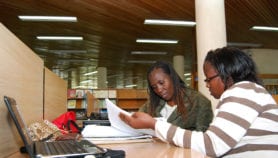
Script media release
Journalists offered ‘big break’ mentoring opportunity from Radio Nigeria
03/04/19






